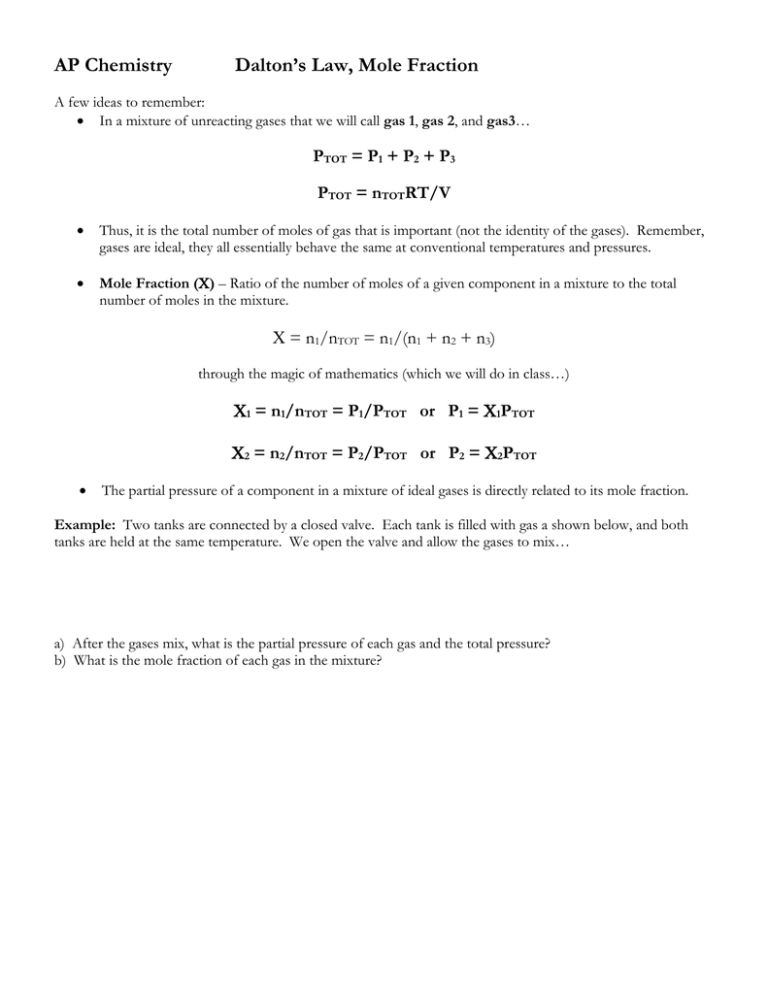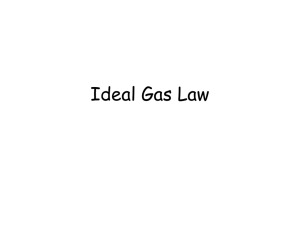AP Chemistry Dalton’s Law, Mole Fraction P = P
advertisement

AP Chemistry Dalton’s Law, Mole Fraction A few ideas to remember: In a mixture of unreacting gases that we will call gas 1, gas 2, and gas3… PTOT = P1 + P2 + P3 PTOT = nTOTRT/V Thus, it is the total number of moles of gas that is important (not the identity of the gases). Remember, gases are ideal, they all essentially behave the same at conventional temperatures and pressures. Mole Fraction () – Ratio of the number of moles of a given component in a mixture to the total number of moles in the mixture. = n1/nTOT = n1/(n1 + n2 + n3) through the magic of mathematics (which we will do in class…) 1 = n1/nTOT = P1/PTOT or P1 = 1PTOT 2 = n2/nTOT = P2/PTOT or P2 = 2PTOT The partial pressure of a component in a mixture of ideal gases is directly related to its mole fraction. Example: Two tanks are connected by a closed valve. Each tank is filled with gas a shown below, and both tanks are held at the same temperature. We open the valve and allow the gases to mix… a) After the gases mix, what is the partial pressure of each gas and the total pressure? b) What is the mole fraction of each gas in the mixture?




